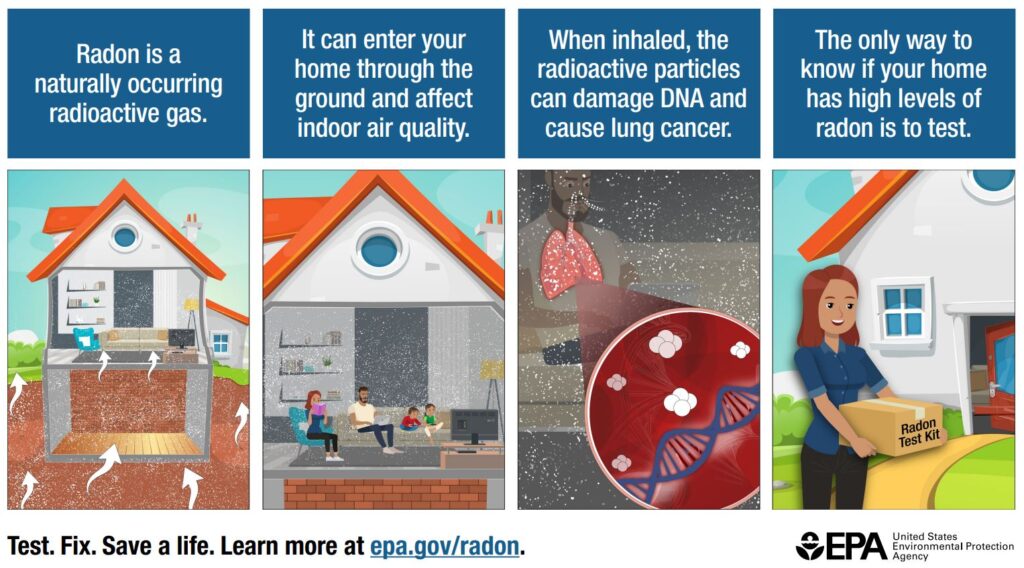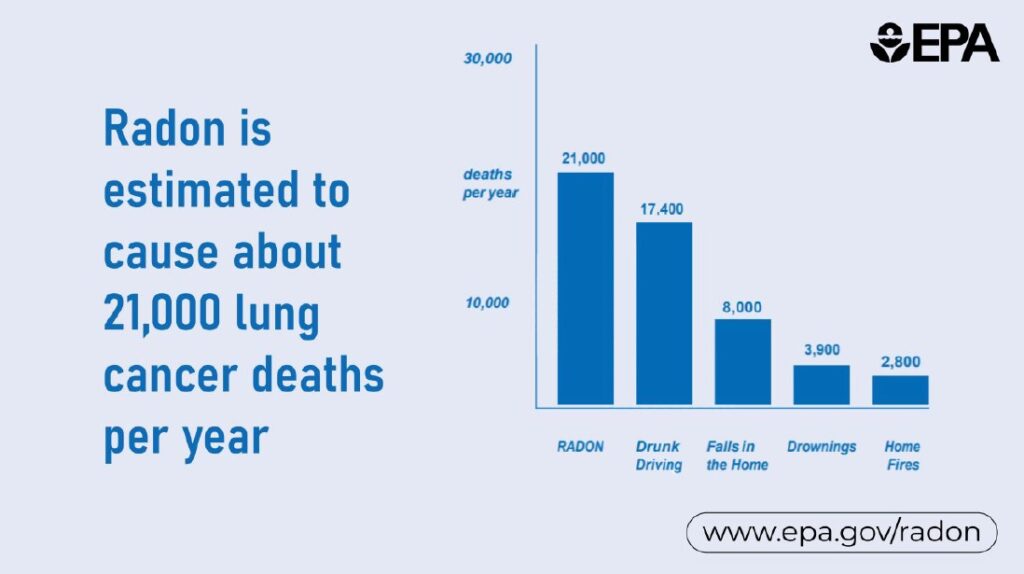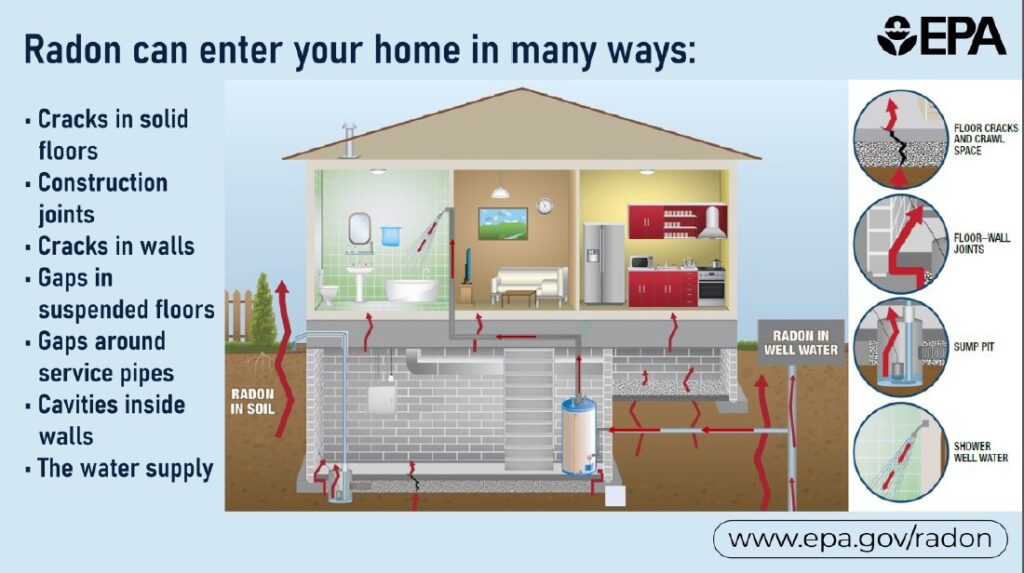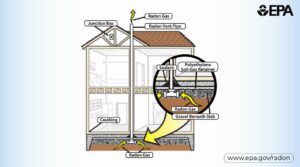What is Radon?
Radon is a cancer-causing radioactive gas.
You can’t see, smell, taste or feel radon. But it may still be a problem in your home. When you breathe air containing radon, you increase your risk of getting lung cancer. In fact, the Surgeon General of the United States has warned that radon is the second leading cause of lung cancer in the United States today.


Where does radon come from?
Radon is a decay product of uranium deposits found naturally in the ground. The amount and depth of the uranium varies widely from area to area.
Radon levels are affected by many factors including the amount of uranium and type of soil below your home, weather conditions, and construction of your home.
Just because your neighbor’s home tested at a certain level does not mean your home will test the same. TESTING IS THE ONLY WAY TO DETERMINE THE LEVEL OF RADON IN YOUR HOME.
Testing is easy! For a FREE radon test kit and analysis, call 1-800-247-2435 or Click Here.
We recommend that everyone who conducts their own test read A Citizen’s Guide to Radon, The guide to protecting yourself and your family from radon.

You can fix and prevent radon problems
If you find that you have high radon levels, there are ways to fix a radon problem. Even very high levels can be reduced to acceptable levels. Also, if you are planning to build a new home, radon resistance can be built into your home affordably.
Check out Consumer’s Guide to Radon Reduction: How to Reduce Radon Levels in Your Home and/or Building Radon Out: A Step-by-Step Guide on How to Build Radon-Resistant Homes.
Insist that your contractor build radon resistance into your home.
You may find that fixing a radon problem is better performed by a professional who is trained to perform radon mitigation. Anyone hired to correct a radon problem must be licensed.
How to Find a Licensed Radon Professional All persons and/or businesses who test radon or mitigate a structure for high levels must be licensed. There are exceptions for homeowners testing or fixing their own home, or a school employee testing a school in the district in which the employee works. Radon Testing and Mitigation licenses are issued by the Ohio Department of Health. To find a licensed radon professional, click here.
All persons and/or businesses who test radon or mitigate a structure for high levels must be licensed. There are exceptions for homeowners testing or fixing their own home, or a school employee testing a school in the district in which the employee works. Radon Testing and Mitigation licenses are issued by the Ohio Department of Health. To find a licensed radon professional, click here.
It is recommended that bids be obtained from at least three companies. Compare prices and ask enough questions to fully understand the proposed work. Before making a final decision with a contractor, call the Ohio Department of Health Radon Licensing at (614) 644-2727 or e-mail Bradiation@odh.ohio.gov and ask the specific question, “Are there any complaints against this contractor?”.
Radon risk in other structures
The amount of risk is a factor of the level of radon and the time exposed. While most people tend to spend the majority of their time at home, work and school account for a large part of time, too. As with homes, it is recommended that these structures be tested and corrected if elevated levels of radon are detected.